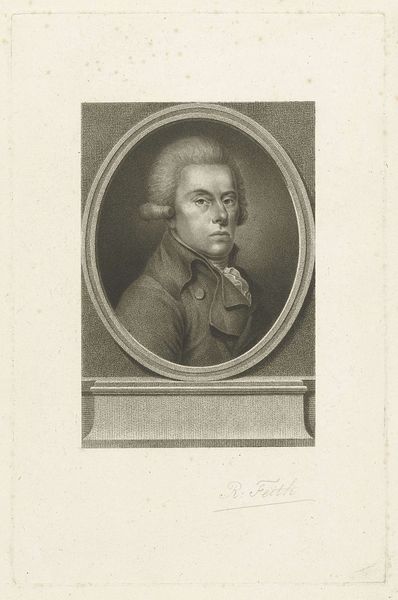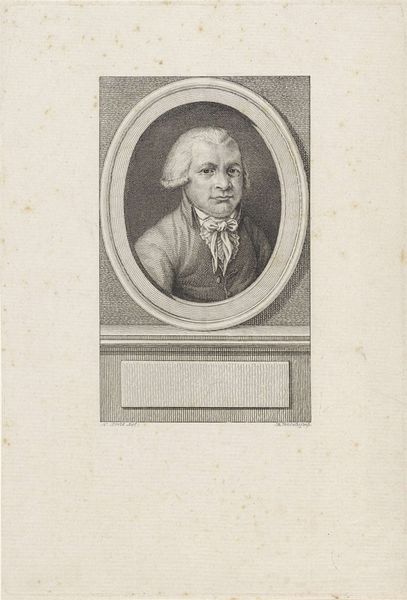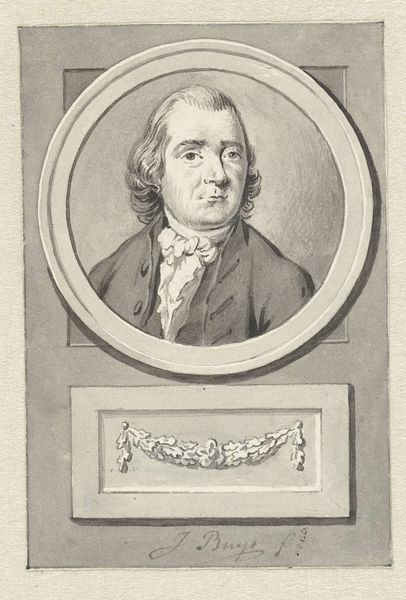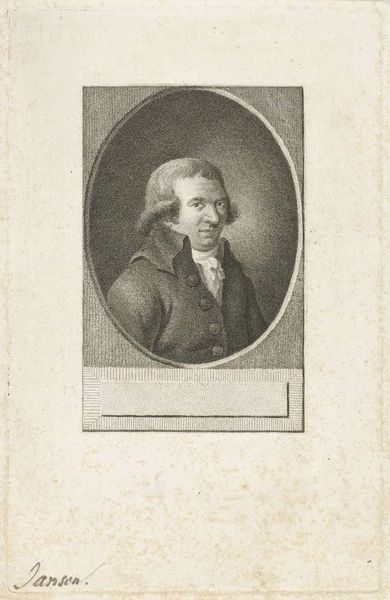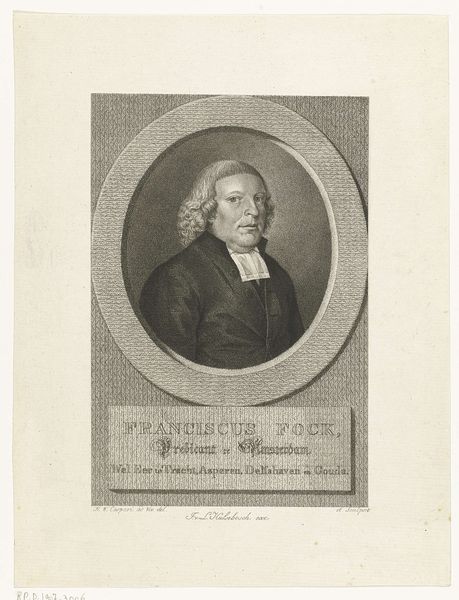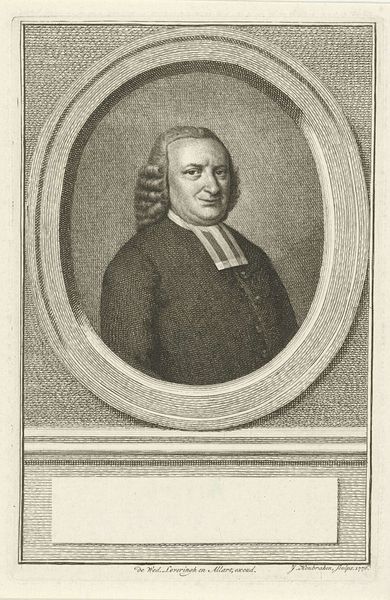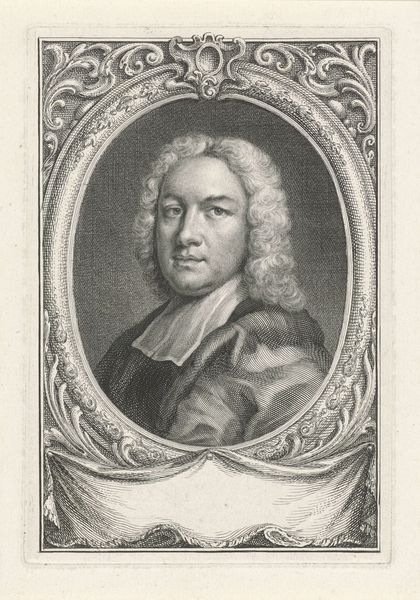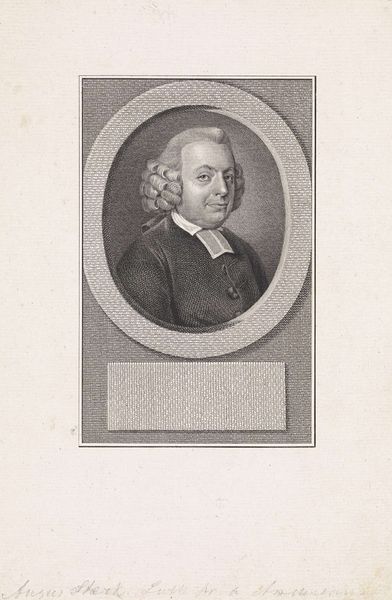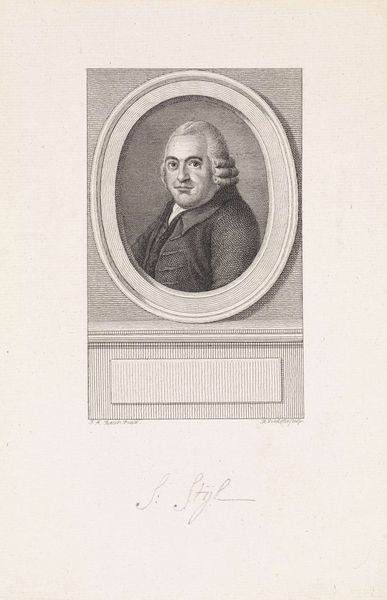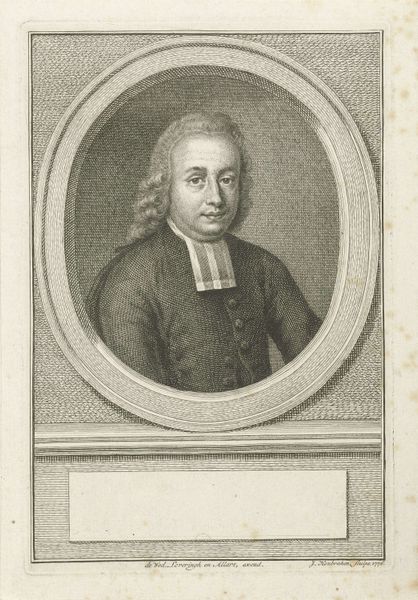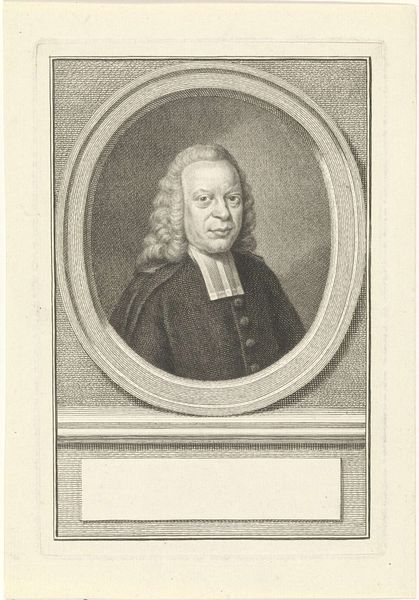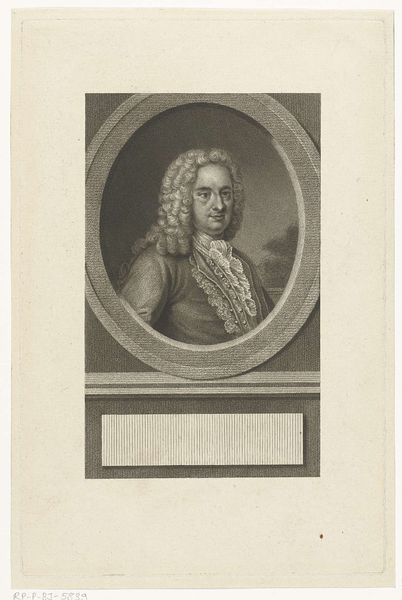
#
pencil drawn
#
light pencil work
#
photo restoration
#
pencil sketch
#
old engraving style
#
personal sketchbook
#
historical photography
#
pencil drawing
#
old-timey
#
pencil work
Dimensions: height 236 mm, width 152 mm
Copyright: Rijks Museum: Open Domain
Curator: Gosh, he looks rather serious, doesn't he? Almost like he's been caught in the middle of a rather important thought. Editor: That’s certainly one way to read it! We're looking at a portrait of J. van der Heijden, created in 1795 by François Joseph Pfeiffer. It’s currently held in the Rijksmuseum collection. Curator: There's such stillness about him. He’s posed so deliberately, this fellow, set in that little oval frame within the print... it feels like looking into someone's memory. A sepia toned memory if that makes sense? The texture feels so…soft, somehow. Editor: Absolutely, and the technique contributes to that mood. The piece utilizes a delicate pencil, providing intricate shading to define his features and clothing. It reminds us of the way portraiture functioned in the late 18th century; beyond likeness, portraits were deeply connected to the construction of social identity. Curator: Identity. That’s a big word. Makes you wonder, what did van der Heijden think his identity was? What stories were he hoping this picture would tell the world? Or, more hauntingly, what stories about him was he trying to prevent? Do you think it mattered to him what people thought of him, his place in society and all that? Or maybe it was simply about documenting a man at a moment in time. A historical artifact, if you will. Editor: Exactly. Think about who commissioned such a portrait. What kind of public persona they wanted to cultivate. What role this image had to play in their social and political positioning. The empty frame under the portrait must have carried a description once, anchoring our gaze, giving him further context within society. The removal makes his historical trace quite strange and forces us to question our methods. Curator: Strange indeed. It does provoke some interesting questions! Like, is seeing a fraction better, worse or simply other, than never seeing anything at all? Editor: A vital question when reflecting on historical art, indeed! A snapshot of then meeting the uncertainties of now.
Comments
No comments
Be the first to comment and join the conversation on the ultimate creative platform.
